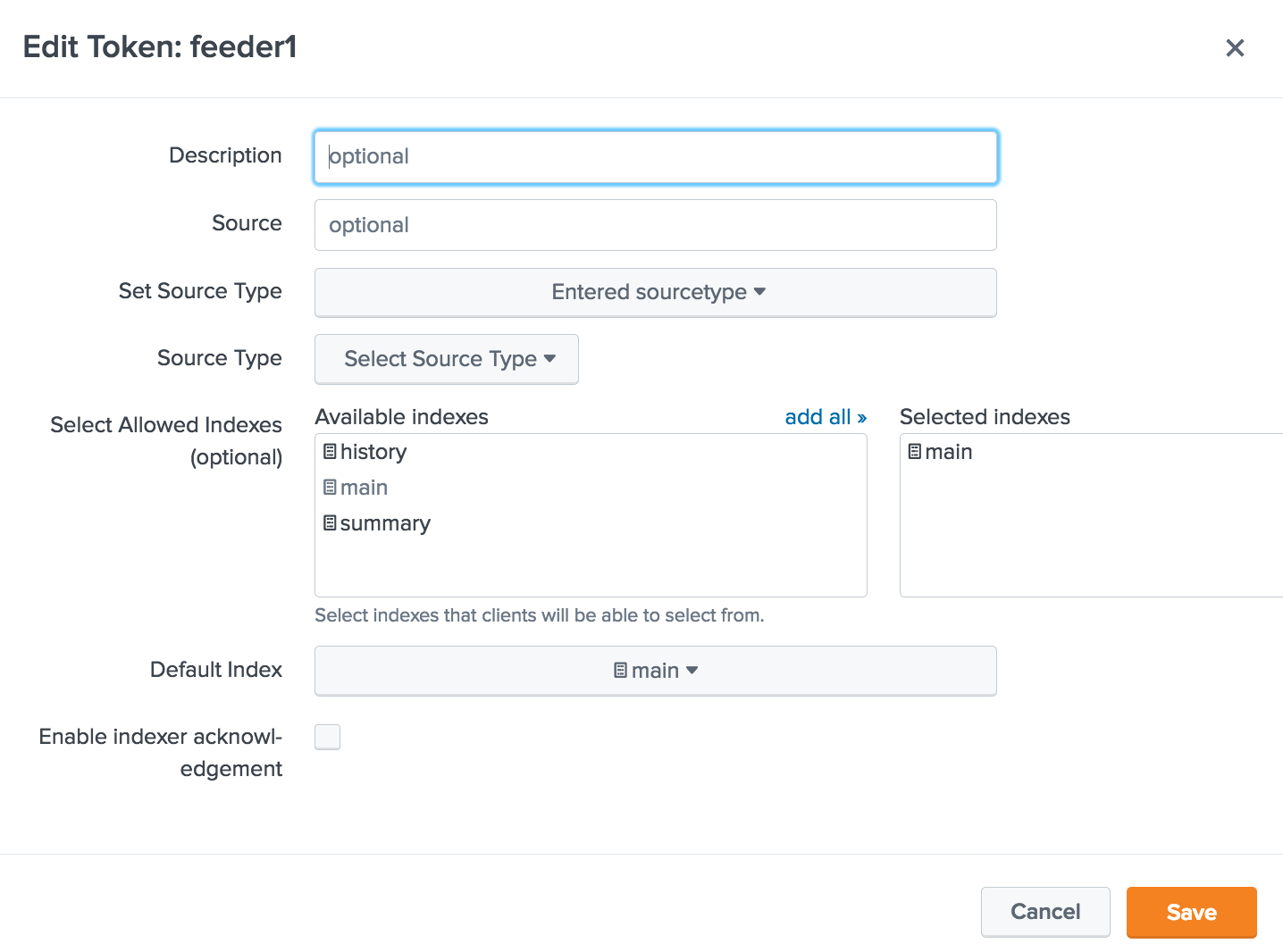Splunk's HTTP Event Collector (HEC) is an endpoint allowing sending messages to Splunk via RESTful API using HTTP/S transport. The endpoint identifies its clients based on a token the clients' provide. A Splunk administrator configures tokens under "Add Data", "HTTP Event Collector". Once configured, the administrator provides the token to a client application.
By default, the HTTP Event Collector receives data over HTTPS on TCP port 8088.
If necessary, enable HEC tokens by running the following command on the server:
curl -k -X "POST" -u admin:password https://localhost:8089/servicesNS/admin/splunk_httpinput/data/inputs/http/http/enableIf necessary, create HEC token:
The "Input Settings" for the HEC are:
- Source Type: Automatic
- App context: Search & Reporting
- Index:
main
Prior to connecting to HEC, check its availability:
echo -n | openssl s_client -showcerts -connect splunk:8088The expected result would look like this:
CONNECTED(00000003)
depth=1 C = US, ST = CA, L = San Francisco, O = Splunk, CN = SplunkCommonCA, emailAddress = support@splunk.com
verify error:num=19:self signed certificate in certificate chain
---
Certificate chain
0 s:/CN=SplunkServerDefaultCert/O=SplunkUser
i:/C=US/ST=CA/L=San Francisco/O=Splunk/CN=SplunkCommonCA/emailAddress=support@splunk.com
Next, create a configuration file at ~/.splunk.hec.yaml with the following contents:
---
collector:
host: 'splunk'
port: 8088
token: '61876693-4758-4f45-bca7-c910ccc746eb'make
bin/http-event-collector-clientThe expected output follows. Here, the client sends a message, plus two
event fields: foo and bar:
$ bin/http-event-collector-client
DEBU[0000] splunk-http-collector-client: proto=https
DEBU[0000] splunk-http-collector-client: host=splunk
DEBU[0000] splunk-http-collector-client: port=8088
DEBU[0000] splunk-http-collector-client: token=61876693-4758-4f45-bca7-c910ccc746eb
DEBU[0000] splunk-http-collector-client: timeout=5
DEBU[0000] splunk-http-collector-client: endpoint.health=https://splunk:8088/services/collector/health
DEBU[0000] splunk-http-collector-client: endpoint.event=https://splunk:8088/services/collector/event
DEBU[0000] splunk-http-collector-client: endpoint.raw=https://splunk:8088/services/collector/raw
DEBU[0000] splunk-http-collector-client: url=https://splunk:8088/services/collector/health
DEBU[0000] splunk-http-collector-client: status=200 OK
DEBU[0000] splunk-http-collector-client: HEC is available and accepting input
DEBU[0000] splunk-http-collector-client: code=17, text=HEC is healthy
DEBU[0000] message="{ test message on 2018-08-07 09:42:03.651128622 -0400 EDT m=+0.067162200" map[foo:bar bar:foo] 0}"
DEBU[0000] splunk-http-collector-client: url=https://splunk:8088/services/collector/event
DEBU[0000] splunk-http-collector-client: status=200 OK
DEBU[0000] splunk-http-collector-client: code=0, text=SuccessOnce successful, the Splunk would have the following indexed event:



